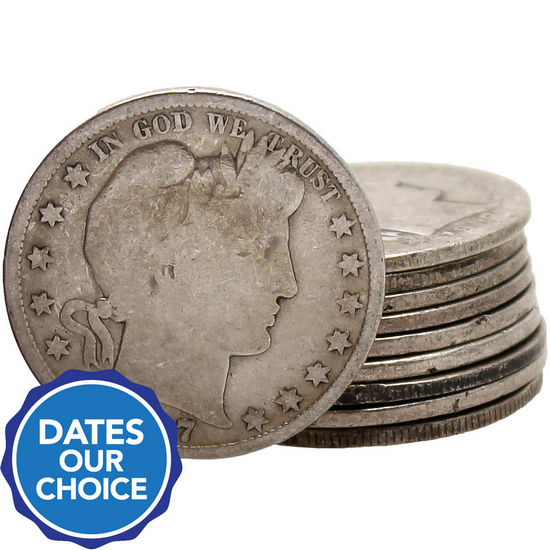
Barber coinage has been a focal point for numismatists and collectors since its demise in 1915. These dimes, quarters, and halves are one of many silver options sought after for its short number of years in circulation (1892-1915).
Born in London in 1840, Charles Edward Barber came from a family littered with past British engravers. Along with his family and his father, William, Barber came to the United States in 1852 and surfaced on the east coast where his father practiced engraving and die making in Boston and then Providence.
Not long after, William was appointed as chief engraver of the Philadelphia Mint in 1869. Charles was made an assistant engraver to his father and later took over the position in 1879 when his father passed. Selected to the position by President Rutherford B. Hayes, Barber became the sixth chief engraver of the United States Mint on January 20, 1880.
Charles Barber's Coin Series History
The 1880s saw United States coinage of dimes, quarters, and half dollars in the form of the Liberty Seated design. Influenced by British design, the series of coins were thought to some as having a less than average appearance which in turn prompted a design change in the early 1890s.
In 1887, United States Mint Director James P. Kimball expressed thoughts such as “inferiority of our coinage” to legislature. A few years later on September 26, 1890, a bill was passed allowing for a design change for all dimes, quarters, and halves.
Believing Charles Barber was the only engraver “competent” enough to handle the task by Kimball’s successor Edward O. Leech, Barber embarked on a journey for the new design. Much like the Seated Liberty coins, Barber’s influence of British coinage was used for the original obverse. After numerous design changes and critiques made by Mint Director Leech, Barber’s final designs were endorsed by then-President Benjamin Harrison in November of 1891. Production of the new series of Barber Dimes, Barber Quarters and Barber Halves started in January of 1892.
Receiving mixed reviews then and even now, the mint decided to retire the design in 1915 after the minimum requirement of circulation was up. Mercury dimes, Standing Liberty quarters, and Walking Liberty halves soon followed in 1916.
Source: The Complete Guide to Barber Halves by David Lawrence










